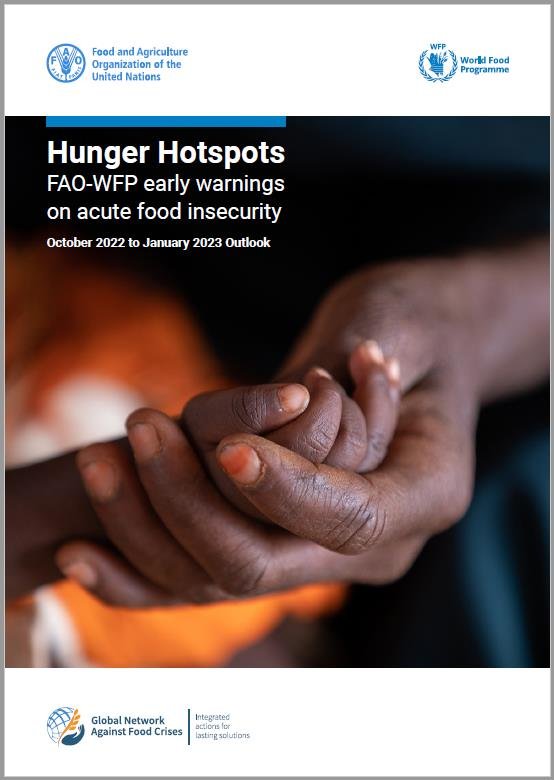 Read this article in French
Read this article in French- Share this article
- Subscribe to our newsletter
Hunger Hotspots
The number of people facing acute food insecurity worldwide is set to continue to rise sharply, according to the latest Hunger Hotspots report. The report – whose full title is Hunger Hotspots - FAO-WFP early warnings on acute food insecurity – was published by the Food and Agriculture Organization of the United Nations (FAO) and the UN World Food Programme (WFP) in September 2022. It gives an outlook on expected food insecurity and hunger from October 2022 to January 2023.
The food crisis is tightening its grip on 19 ‘hunger hotspots’, the report states. These developments are driven by rising conflict, weather extremes and economic instability aggravated by the pandemic and the ripple effects of the crisis in Ukraine.
The report lays out country-specific recommendations for both short-term protective measures to be taken before new humanitarian needs materialise as well as emergency response actions to address existing humanitarian needs. It spotlights the hunger crisis in the Horn of Africa, where the longest drought in over 40 years is forecast to continue.
Up to 26 million people are expected to face Crisis levels of food insecurity or worse (i.e. IPC Phase 3 and above) in Somalia, southern and eastern Ethiopia, and northern and eastern Kenya. The spectre of large-scale deaths from hunger looms large in Somalia, with humanitarian assistance at risk of being cut due to funding shortfalls. Without an adequate humanitarian response, analysts expect that by December, as many as four children or two adults per 10,000 people will die every day. Hundreds of thousands are already facing starvation with staggering levels of malnutrition expected among children under five.
Unless action is taken, an all-time high of 970,000 people globally are expected to face catastrophic hunger (IPC Phase 5: Catastrophe) – and are starving or projected to starve – in Afghanistan, Ethiopia, South Sudan, Somalia and Yemen. This is ten times more than six years ago when only two countries had people in Phase 5. In these five countries, as well as in Nigeria, there are populations currently in IPC Phase 4 (Emergency) but who may also face catastrophic conditions in the coming months due to aggravating factors. Starvation and death are a daily reality in these areas, and extreme levels of mortality and malnutrition may unfold without immediate action.
The Democratic Republic of the Congo, Haiti, Kenya, the Sahel, the Sudan and Syria remain “of very high concern” with deteriorating conditions – as stated in the June edition of the quarterly report – but this category now also includes the Central African Republic and Pakistan. Guatemala, Honduras and Malawi have been added to the overall list of hunger hotspots. Sri Lanka, Zimbabwe and Madagascar remain on the list.
Analysis indicates that violent conflict is still the primary driver of acute hunger in 2022. Weather extremes such as floods, tropical storms and droughts remain critical drivers in many parts of the globe, and a “new normal” of consecutive and extreme weather events is becoming apparent, particularly in the hotspots.
(WFP/ile)





Add a comment
Be the First to Comment